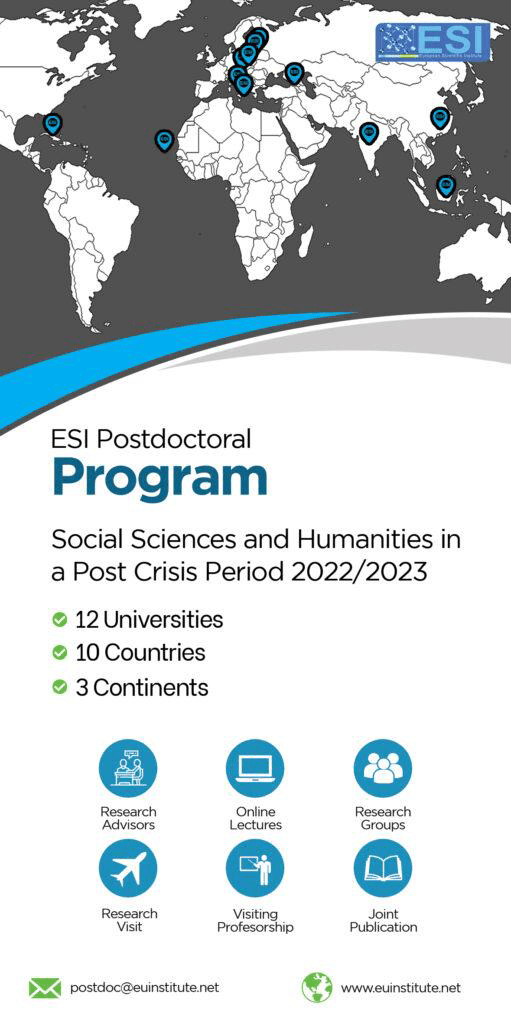Evaluation de la Toxicité Subchronique du Bouillon Culinaire Commercial “ Cube Maggi ” sur les Paramètres Anthropométriques et Zootechniques chez le Rat Wistar
Abstract
Depuis plusieurs années, la consommation de bouillons cubes, notamment la marque « Maggi », suscite des controverses. Entre rumeurs persistantes et manque de transparence quant à leur composition, de nombreux consommateurs ignorent les risques potentiels liés à une consommation excessive. Une étude récente suggère en effet que le « Cube Maggi » pourrait nuire à la santé humaine. Cette étude vise à évaluer les effets d’une consommation prolongée du bouillon culinaire « Cube Maggi », combinée à de l’huile de palme raffinée, sur les paramètres anthropométriques et zootechniques chez le rat Wistar. Quatre-vingt-seize rats albinos Wistar ont été répartis en six groupes recevant différents régimes alimentaires pendant trois mois. Les régimes incluaient des granulés standards, des granulés enrichis en huile de palme, en « Cube Maggi » à diverses concentrations, et en poudre de Tridax procumbens. Les paramètres mesurés comprenaient la masse corporelle, la consommation alimentaire, l’hydratation, la digestibilité, et les indices zootechniques. Une consommation excessive de « Cube Maggi » (6%) combinée à Tridax procumbens a entraîné une augmentation significative de la masse corporelle, notamment chez les rats mâles. En revanche, les régimes modérés n’ont pas induit de déséquilibre nutritionnel ni de variation significative des indices zootechniques. La consommation modérée de « Cube Maggi » et d’huile de palme raffinée ne semble pas altérer les paramètres nutritionnels chez le rat Wistar. Toutefois, une consommation excessive pourrait favoriser une prise de poids significative.
For several years, the consumption of bouillon cubes, particularly the “Maggi” brand, has sparked controversy. Amid persistent rumors and a lack of transparency regarding their composition, many consumers remain unaware of the potential risks associated with excessive intake. A recent study suggests that “Cube Maggi” may pose health risks to humans. This study aims to assess the effects of prolonged consumption of the culinary bouillon “Cube Maggi,” combined with refined palm oil, on anthropometric and zootechnical parameters in Wistar rats. Ninety-six albino Wistar rats were divided into six groups and fed different dietary regimens over a three-month period. The diets included standard pellets, pellets enriched with refined palm oil, “Cube Maggi” at varying concentrations, and Tridax procumbens powder. Parameters measured included body mass, food intake, hydration, digestibility, and zootechnical indices. Excessive consumption of “Cube Maggi” (6%) combined with Tridax procumbens led to a significant increase in body mass, particularly in male rats. In contrast, moderate regimens did not induce nutritional imbalance or significant variation in zootechnical indices. Moderate consumption of “Cube Maggi” and refined palm oil does not appear to alter nutritional parameters in Wistar rats. However, excessive intake may promote significant weight gain.
Downloads
Metrics
References
http://mcreveil.com/Français/sant/cubes_aromes_poisons_fr.html. Consulté le 19/12/2018.
2. Benyoub, N. E. (2011). Détermination de quelques paramètres biochimiques chez la rate Wistar consommant un régime cafeteria enrichi en huile de lin. Mémoire de Magister en Agronomie, Université Abou Bekr Belkaïd Tlemcen, Algérie, 117 p.
3. Bohué, A. I. H., Kamagaté, A., & Yapo, A. P. (2016). Prévalence à l’obésité par la consommation modérée d’huile de palme chez le rat. European Scientific Journal, 12(30), 224–242.
4. Cani, P. D., Bibiloni, R., Knauf, C., Waget, A., Neyrinck, A. M., Delzenne, N. M., & Cani, P. D. (2008). Metabolic endotoxemia initiates obesity and insulin resistance. Diabetes, 57(7), 1470–1481.
5. Chou, W. L., Chuang, L. M., Chou, C. C., Wang, A. H., Lawson, J. A., FitzGerald, G. A., & Chang, Z. F. (2007). Identification of a novel prostaglandin reductase reveals the involvement of prostaglandin E2 catabolism in regulation of peroxisome proliferator-activated receptor gamma activation. Journal of Biological Chemistry, 282, 18162–18172.
https://doi.org/10.1074/jbc.M702289200
6. Enriori, P. J., Evans, A. E., Sinnayah, P., Jobst, E. E., Tonelli-Lemos, L., Billes, S. K., et al. (2007). Diet-induced obesity causes severe but reversible leptin resistance in arcuate melanocortin neurons. Cell Metabolism, 5(3), 181–194.
https://doi.org/10.1016/j.cmet.2007.02.004
7. European Union. (1986). Council Directive 86/609/EEC of 24 November 1986 on the protection of animals used for experimental and other scientific purposes. Official Journal of the European Communities, L 358, 1–28. https://eur-lex.europa.eu/legal-content/EN/ALL/?uri=celex%3A31986L0609
8. FAO. (1994). Experts’ recommendations on fats and oils in human nutrition. Food and Nutrition Paper, 57.
9. Gasnier, A., & Vachel, J. P. (1952). Recherches sur la méthode de mesure de la digestibilité d’un aliment : conditions d’emploi de cette méthode. Annales de Zootechnie, 1(1), 157–174.
10. Hamlat, N., Neggazi, S., Benazzoug, Y., Kacimi, G., Chaïb, S., Aouichat, B., & Bouguerra, S. (2008). Régime hyperlipidique et processus artérioscléreux chez Rattus norvegicus. Sciences et Technologie, 27, 49–56.
11. He, K., Zhao, L., Dey, P., Yang, L., & Zhang, X. (2020). Monosodium glutamate induces oxidative stress and metabolic disorders in rats. Food and Chemical Toxicology, 135, 110937.
12. Mann, A., Abdulkadir, N. U., & Muhammad, G. (2003). Medicinal and Economic Plants of Nupe Land. Juber Evans Books and Publication.
13. OCDE. (1998). Ligne directrice de l’OCDE pour les essais de produits chimiques : étude de toxicité orale à doses répétées pendant 90 jours sur les rongeurs. OCDE 408, 16 p.
14. OMS. (2002). Rapport sur la santé dans le monde : Réduire les risques et promouvoir une vie saine. Organisation Mondiale de la Santé, 4 p.
15. OMS. (2011). Rapport sur la situation mondiale des maladies non transmissibles. Organisation Mondiale de la Santé, Genève, 20 p.
16. Onyeike, E. N., Monanu, M. O., & Okoye, C. N. (2012). Changes in blood lipid of Wistar albino rats fed cholesterol diet. Annals of Biological Research, 3(11), 5186–5191.
17. Ouattara, H., Amonkan, A. K., Meite, A., & Kati-Coulibaly, S. (2014). Comparaison de la biotolérance de l’huile extraite de l’arille de Blighia sapida (K. Koenig), des huiles de palme et d’olive chez le rat. Afrique Science, 10(1), 226–235.
18. Postic, C., & Girard, J. (2008). Contribution of de novo fatty acid synthesis to hepatic steatosis and insulin resistance. Journal of Clinical Investigation, 118(3), 829–838.
19. Ritov, V. B., Menshikova, E. V., Azuma, K., Wood, R., Toledo, F. G., Goodpaster, B. H., et al. (2010). Deficiency of electron transport chain in human skeletal muscle mitochondria in type 2 diabetes mellitus and obesity. American Journal of Physiology - Endocrinology and Metabolism, 298(1), E49–E58. https://doi.org/10.1152/ajpendo.00317.2009
20. Robert, K., Murray, D. K., & Granner, V. W. (2006). Harper’s Illustrated Biochemistry (27th ed.). The McGraw-Hill Companies.
21. Saïle, R., & Taki, H. (2007). Cholestérol, lipoprotéines et athérosclérose : de la biochimie à la physiopathologie. Les Technologies de Laboratoire, 2(2), 8.
22. Sambanthamurthi, R., Sundram, K., & Tan, Y. A. (2000). Chemistry and biochemistry of palm oil. Progress in Lipid Research, 39(6), 507–558.
23. Soladoye, M. O., Ikotun, T., Chukwuma, E. C., Ariwaodo, J. O., Ibhanesebor, G. A., Agbo-Adediran, O. A., & Owolabi, S. M. (2013). Our plants, our heritage: Preliminary survey of some medicinal plant species of Southwestern University Nigeria Campus, Ogun State, Nigeria. Annals of Biological Research, 4(12), 27–34.
24. Stienstra, R., Duval, C., Müller, M., & Kersten, S. (2007). PPARs, obesity, and inflammation. PPAR Research, Article ID 95974, 10 p. https://doi.org/10.1155/2007/95974
25. Sundram, K., Sambanthamurthi, R., & Tan, Y. A. (2003). Palm oil and the cardiovascular system. Asia Pacific Journal of Clinical Nutrition, 12(3), 355–362.
26. World Health Organization. (2021). Obesity and overweight. https://www.who.int/news-room/fact-sheets/detail/obesity-and-overweight
27. Yessoufou, A. G., Yessoufou, K. A., Gbaguidi, B., Sezan, A., & Agbere, A. R. D. (2012). Évaluation anthropométrique de l’état nutritionnel des enfants de 0 à 59 mois reçus à l’unité de vaccination du CHR Lomé-Commune (Togo). Journal de Recherche Scientifique de l’Université de Lomé, 17(1), 21–32.
28. Zambou, N. F., Katcham, P. M., Fonteh, A. F., Guetiya, W. R., & Sieladie, D. V. (2013). Effects of inclusion of two probiotic strains isolated from sha’a, a maize-based traditionally fermented beverage, on lipid metabolism of rabbits fed a cholesterol-enriched diet. International Journal of Animal and Veterinary Advances, 5(2), 87–97.
Copyright (c) 2025 Mory Konaté, Adama Kamagate

This work is licensed under a Creative Commons Attribution 4.0 International License.








